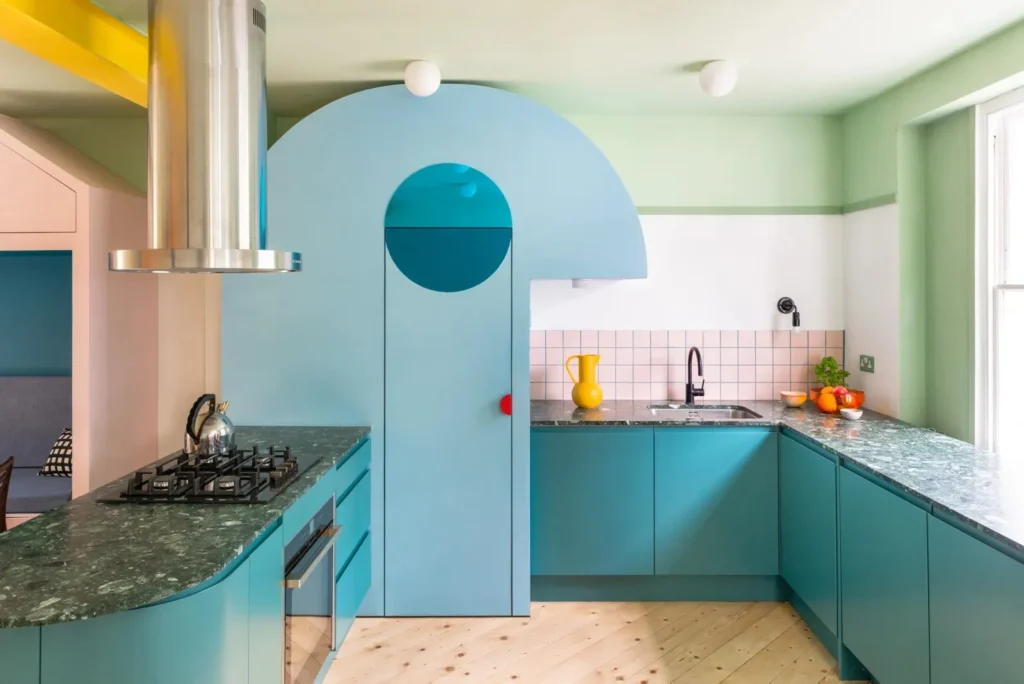Designing a smart kitchen for small spaces requires creativity and thoughtful planning to maximize functionality and efficiency without compromising on style. A smart kitchen isn’t just about advanced technology—it’s about using innovation to solve common challenges, save space, and enhance convenience. Here’s how you can transform your small kitchen into a smart, efficient hub.
Benefits of a Smart Kitchen in Small Spaces
Smart kitchen solutions are ideal for compact areas, offering several advantages:
- Space Optimization: Smart tools and features often consolidate multiple functions into one, reducing clutter.
- Energy Efficiency: Automated systems help lower electricity and water consumption.
- Convenience: Features like voice control and automation streamline daily cooking and cleaning routines.
- Organization: Apps and tools designed for small spaces improve food storage and inventory management.
Planning a Smart Kitchen for Compact Spaces
Evaluate Your Needs
Before diving into any upgrades, determine your specific challenges and priorities. Ask yourself:
- What activities take up the most time in your kitchen?
- Which appliances or tools could serve multiple purposes?
- How can you better utilize vertical or hidden spaces?
Understanding your needs will guide your choices and help you avoid unnecessary purchases.
Focus on Multifunctional Gadgets

In small kitchens, space is precious. Smart kitchen solutions should be versatile, combining several functions into one. For instance, instead of having a separate oven, toaster, and air fryer, opt for a device that integrates these functions. This approach reduces clutter and frees up counter space.
Utilize Vertical and Hidden Spaces
Small kitchens benefit significantly from creative storage solutions. Use vertical space for hanging utensils or mounting shelves for smart storage. Install pull-out organizers inside cabinets to make full use of hidden spaces.
- Tip: Label storage areas and use inventory apps to keep track of ingredients and tools.
Smart Kitchen Ideas for Small Spaces
1. Smart Lighting Solutions
Lighting can dramatically improve the usability and ambiance of your small kitchen.
- Under-Cabinet Lighting: Add motion-sensing LED strips under cabinets to brighten work areas without taking up space.
- Dimmable Lighting: Adjustable lights help create the right mood while saving energy.
- Automation: Connect lights to a central system to automate turning them on or off based on time or activity.
2. Voice-Controlled Assistance
Voice control is especially useful in small kitchens where multitasking is common. Voice-activated assistants can help with:
- Setting timers or alarms while you cook.
- Playing recipes or step-by-step cooking instructions hands-free.
- Managing grocery lists and syncing them to your phone.
3. Space-Saving Storage
Compact kitchens thrive on clever storage solutions.
- Magnetic Racks: Use magnets on walls or the fridge to store knives, spice jars, or utensils.
- Expandable Drawer Organizers: Keep drawers tidy with adjustable compartments for utensils and small gadgets.
- Over-Cabinet Hooks: Hang lightweight tools or towels on cabinet doors to free up space.
4. Energy Efficiency and Automation
Automation plays a key role in smart kitchens. For instance:
- Programmable Plugs: Automate non-smart appliances, such as coffee makers or slow cookers.
- Timers and Sensors: Use automated systems for lighting or water faucets to minimize waste.
- Energy Monitors: Track the energy usage of your devices to optimize consumption.
5. Digital Inventory Management
Food storage can be tricky in small kitchens. Digital tools can help:
- Use apps to track pantry items and expiration dates.
- Plan meals around what you already have, reducing waste.
- Set reminders for when perishable items need to be used or restocked.
6. Compact and Hidden Features
Maximize space by integrating smart solutions directly into the design:
- Hidden Charging Stations: Install charging ports under counters or inside drawers to keep devices out of sight.
- Pull-Out Workspaces: Add extendable surfaces that can double as prep areas when needed.
- Collapsible Gadgets: Opt for foldable or storable tools that can be easily tucked away when not in use.
7. Smart Cleaning Solutions
Small kitchens can become cluttered quickly, so keeping them clean is essential.
- Touchless Faucets: Install motion-activated faucets to make cleaning more hygienic and efficient.
- Automated Cleaning Tools: Use robotic mops or vacuums to keep floors tidy without taking up storage space.
- Compact Trash Solutions: Install pull-out bins or stackable recycling units to maintain a clean and organized kitchen.
Tips for an Efficient Smart Kitchen Setup
- Plan for Gradual Upgrades: Focus on one smart feature or device at a time to avoid feeling overwhelmed or overspending.
- DIY Installation: Many smart kitchen upgrades, like lights and plugs, are simple to install yourself.
- Repurpose Existing Tools: Use smart plugs and adapters to give your current appliances a tech upgrade.
- Prioritize Energy Efficiency: Opt for devices that save energy and reduce utility bills in the long term.
- Stay Organized: Use inventory and task management apps to reduce waste and keep your kitchen running smoothly.
Conclusion
A smart kitchen for small spaces is about more than just high-tech gadgets—it’s about clever design and maximizing every inch of your space. By focusing on multifunctional devices, efficient lighting, and creative storage solutions, you can build a modern and highly functional kitchen without feeling cramped. Whether you’re automating tasks, organizing your pantry, or enhancing convenience with voice control, a smart kitchen setup is entirely achievable on a budget and in a compact space.

